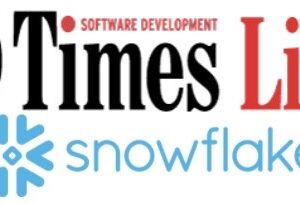White Papers
Weverse reduces data management costs to drive innovation in fandom culture
Challenge
Weverse is a global fandom platform with a vision to innovate fandom culture by expanding customer experience. Currently, Weverse has users in 238 countries with 6.4 million monthly active users (MAU). The goal is to create a place for K-pop artists to connect with fans through articles, videos, blogs and live interactions in official fan communities.
Solution
Sumo Logic has improved operational efficiency across Weverse. By utilizing insights from Sumo Logic, Weverse plans to accelerate platform innovation. Weverse improved service quality through Sumo Logic while reducing the cost of managing debug logs (error resolution records). In the future, Weverse will use debug logs to release new and innovative services.
Results
Reduction in log data management cost
By using Sumo Logic, logs were collected stably despite explosive data changes, and through log management by tiers, they achieved a significant cost reduction making the costs of log management reasonable.
Download the Case Study Now!
White Papers
Gartner Magic Quadrant for APM and Observability
Gartner defines the application performance monitoring (APM) and observability market as software that enables the observation and analysis of application health, performance and user experience.
Sumo Logic’s customers leverage its unified platform to address multiple use cases to manage the reliability and security of cloud-native apps with disruptive economics.
Access the 2022 Gartner Magic Quadrant for APM and Observability, compliments of Sumo Logic, to understand:
- Why Sumo Logic was named a Challenger in the report
- APM and observability evaluation criteria
- Understand the strengths and cautions of Sumo Logic
In addition to its placement in the Magic Quadrant for APM and Observability, Sumo Logic was named a Visionary in the 2021 Gartner Magic Quadrant for Security Information and Event Management (SIEM).
“We believe that our position as a Challenger is a testament to Sumo Logic’s ability to provide enterprises with cloud-native tools to deliver reliable digital experiences at scale,” said Erez Barak, VP of Product Development for Observability at Sumo Logic. “Full-stack observability starts with simplifying how logs, metrics and traces are collected to give organizations every advantage available to manage modern applications.”
Fill out the form to learn more now!
Webinars
From Zero (Day) to Hero
AVAILABLE NOW |
It feels like the song is on repeat. Another week, another zero-day vulnerability is disclosed. Some are more potent than others. Log4j and Spring4Shell were on the catastrophic side. Enterprises are still grappling with the long tail of Log4j. The Department of Homeland Security Under Secretary Rob Silvers, the board’s chairman, recently proclaimed that Log4j “is not over. This was not a historic look back and now we’re in the clear,” Silvers said. “The board found that it is likely that organizations are going to be dealing with continued Log4j exposure for years to come, maybe a decade or longer.”
More recently, the Apache Commons Text CVE-2022-42889 was disclosed. See this blog for more detail.
At this rate, the situation almost feels hopeless.
The one thing all these zero days have in common is that Contrast Protect provided immediate hardening for applications. Full application context — from the inside, not at the perimeter — inoculates applications against recent zero-day attacks. Application Security (AppSec) teams are seen as heroes instead of as zeroes. Attend this webinar and get updated on zero-day vulnerabilities and how Contrast Protect adds critical application hardening to avoid potential disaster.
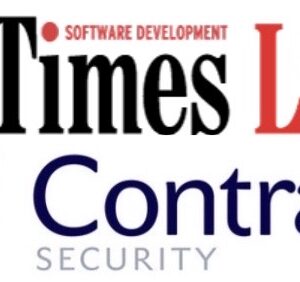
White Papers
Simplify Full-Stack Testing Across Every Technology Layer
Stop wasting time and money using multiple tools to test every technology layer of an application.
With Keysight’s Eggplant test automation solution you only need to work with a single code layer to test back-end systems, APIs, web elements, and the front-end UI to simplify your full-stack testing approach.
Download the paper, ‘Modernize the Enterprise with Full-Stack Testing,’ now to learn:
- How to improve business agility with full-stack testing
- Why you must test all application technology layers together
- The benefits of executing automated full-stack testing in a single framework
- How Keysight’s Eggplant simplifies full-stack testing
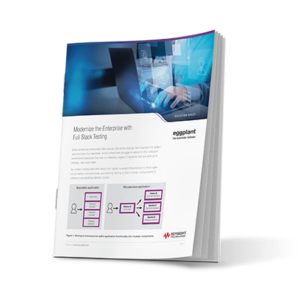
White Papers
Elevate Your Test Designs with AI
Advances in AI have enabled us to close the gap between skilled human testers and UI automation. Now we can test both faster and smarter thanks to a hybrid technique that combines computer vision, intelligent object recognition, and self-generated test cases.
In this white paper, written as part of Sogeti’s 2021-2022 AI for Quality Engineering Report, you will learn how advances in both technology and approach are helping to close this gap.
Download the white paper, ‘AI as Co-Creator of Test Design,’ to discover:
• How AI can help us identify defects that traditional test automation will miss
• The business impact of testing the full application surface
• Five outcomes derived from AI-driven approaches to quality
• How a more expansive view of test coverage supports confidence in critical releases
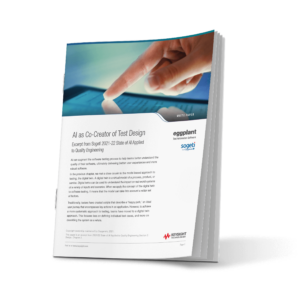
Webinars
SD Times Live! microwebinar series – Value Stream Management
CHECK OUT ALL 10 TOPICS/VIDEOS BELOW
- Topic 10 – “The Bitter Truth About the State of Value Stream Management”
SPEAKERS FOR THIS SESSION: Lance Knight, President & COO, ConnectALL, Andrew Fuqua, SVP of Products, ConnectALL, David Rubinstein, Editor-in-chief, SD Times
As we get closer to the beginning of the new year, we feel obliged to give you all a “state of value stream management” report. The value stream management space has been heating up faster than it is being defined. Amid the confusion, there has been a noticeable shift in what we believe to be the wrong direction. In pursuit of this hotness, over 20 small, mid-sized, and large companies now claim to provide VSM solutions, but are all of them helping with digital transformation goals, DevOps initiatives, or Agile transformation? Or have they simply jumped on the bandwagon and pitched their previously unrelated tool as the key to “doing” value stream management?
From analysts to influencers, VSM has been either misconstrued, ill defined or completely misunderstood. The real value of VSM is in realizing the “human” aspect of practicing lean principles. Most companies have partial offerings — some have integration capabilities, some have metrics capabilities, and some say AI and ML is the future. But, are companies like yours really benefiting from using VSM platforms like the way they claim?
The bitter truth is that most companies (including some big names) are only focused on one small part of the value stream — yet, they are lauded as leaders in the space — absolving them of having a half-baked offering. This incorrect perspective is hurting businesses that are unable to implement VSM as it is truly meant to be.
Join Lance Knight, President & COO of ConnectALL during this session as he attempts to cut through the noise and address the misconception that the “consortium of value stream management influencers” have created. It is critical that we do this because we actually seriously care about helping companies and employees be more efficient, less stressful, and ultimately bring predictability to their software delivery.
- Topic 9 – “Managing flow by using value stream management and observability”
SPEAKERS FOR THIS SESSION: Lance Knight, President & COO @ ConnectALL; Sharath Bhaskara, VP of Technical Services @ ConnectALL; Dave Rubinstein, Editor-in-Chief of SD Times.
With DevOps pipelines having a myriad of tools and DevOps teams not having an integrated tool architecture, the need for observability and lean practices like value stream management is imperative. DevOps leaders need to map out the data from their pipelines for metrics in analytics that drive critical business decisions.
Observability in DevOps is the software tools and methodologies that help Dev and Ops teams to log, collect, correlate, and analyze massive amounts of performance data from a distributed application and glean real-time insights. And value stream management provides the ammunition to boost the impact of observability. In this short webinar, we will look at how value stream management uses observability to optimize and manage flow by creating access to insights for continuous improvement.
- Using observability throughout the value stream, so in pre-production and across the DevOps toolchain, means fewer defects and more predictability in production
- Making the value stream visible and making value measurable
- Shortening MTTR means more time for innovation and more time to spend on adapting ways of working to optimize flow and more valuable outcomes delivered to customers
- Topic 8 – “How to Use Value Stream Management to Identify and Eliminate Non-value-added Activities and Control Costs”
Irrespective of your company’s current financial position and performance, they need to sharpen their competitive edge by applying lean principles like value stream management to cost reduction — that is, the elimination of non-value-added activities or waste in the value stream processes.
By tackling wastes from an end-to-end business process, your company can improve the value of their products and services. They can:
- Achieve significant cost reduction
- Reduce time-to-market
- Emerge stronger with a more competitive profile
Join Lance Knight, president and COO, ConnectALL and David Rubenstein, editor-in-chief, SD Times, in a 10-minute discussion, as they throw light on how VSM can be used for cost savings, higher efficiency, and avoid treating waste elimination as another one-off “tool” or quick fix.
- Topic 7 – “How Tool Integration and Automation Helps Ensure Compliance in Regulated Environments”
SPEAKERS FOR THIS SESSION: ConnectALL’s Lance Knight, COO & President; Norman Miglietta, SVP Marketing; Dave Rubinstein, Editor-in-Chief of SD Times.
In the last one decade, there has been a 10-20% increase in the number of regulations in the U.S. alone across a range of industries. Organizations in industries such as medical/health, pharmaceutical, security, finance, automotive, aerospace, and defense are facing unique challenges pertaining to compliance and risk management, high volumes of data, and navigation of rapidly shifting requirements.
To tackle these, they have to maintain strict control over the development process, from testing to maintenance and release. Test management becomes an important function and the teams need visibility to make sure compliance requirements are met.
And this is where the value stream automation product of a value stream management platform comes into play. It enables software test management and QA teams to connect all the tools in the software development and delivery pipelines. It enables:
- Synchronization for the removal of waste and improved collaboration
- Triggering for interoperability for increased productivity, cost reduction, and controlled flow of information
- Monitoring for amplification of feedback loops, implementation of governance, and capturing of data for key results
- Data collection for data-driven decisions, and regulation and compliance
Want to quickly find out in this 5-10 minute microwebinar how all this is possible? Watch the video!
- Topic 6 of 6 – “How Automating with VSM Unifies Disparate Teams”
We as an industry cannot afford to ignore the dangers of siloed software delivery. The cost of a siloed workforce is staggering, resulting in project delays, declining software quality, and a disconnect from the original project intent. And with the widespread shift to remote work, these silos have become more entrenched than ever.
How can we begin to address the problem?
Join ConnectALL’s Lance Knight (President and COO) and Norman Miglietta (SVP of Marketing) as they sit down with David Rubinstein in the latest SD Times Microwebinar to discuss how automation with value stream management enables organizations to unify disparate teams in every stage of development.
They will discuss why automation is key for any organization struggling with siloed software delivery processes, and what benefits teams can expect from connecting their tools and closely managing the flow of work through the value stream.
- Topic 5 of 6 – “The Misconception: Why do I Need VSM if I’m Already Implementing Agile?”
Organizations not closely familiar with value stream management often may ask: “How does it fit with these other agile approaches we’ve been adopting?” “Why do I need VSM if I’m already implementing Agile?”
The answer: VSM, agile, or for that matter DevOps are not mutually exclusive. Principles of agile are baked into VSM, and VSM in many ways represents an extension of the short cycle/fast feedback approach championed in DevOps. Many organizations struggle to apply agile across silos, and others may struggle to determine ways to align agile workflows towards outcome-focused company goals. VSM does both — It enables agile at scale and at speed while focusing on the priorities that matter most. So, by adopting VSM, you are continuing along your agile digital transformation but with a broader look at all existing activities organization-wide, not just those directly involved with digital product creation/curation.
In this month’s microwebinar, we are joining you exclusively from the venue of Agile 2022 in Nashville, TN! David Rubinstein, SD Times editor-in-chief, Lance Knight, ConnectALL’s President & COO, and Andrew Fuqua, SVP of Product will discuss some of the key highlights they’ve seen from the conference and how those Agile concepts relate back to value stream management. Their insight will address how VSM supercharges agile and channels your software delivery towards a greater purpose.
- Topic 4 of 6 – “What is Automating Your Value Stream?”
When you zoom in on a value stream, you’ll discover what goes into creating a specific valuable element of a software. By streamlining or optimizing a value stream, you can develop recurring principles that can be used repeatedly for value creation. And this is where automating your value stream comes in. In this session, we will show you how automating your value stream improves the performance of your value stream. Automation would involve introducing feedback loops for the smallest action taken. You can bring in consistency by following certain principles repeatedly, making some activities predictable. You can execute many of these tasks at scale and converge the results into something digestible for the next step.
- Topic 3 of 6 – “The Surprising Reality About Bottlenecks”
In this microwebinar, we will delve into different perspectives on locating bottlenecks, how they might be useful (or not), and the reason that only using your average cycle time to identify your bottlenecks is not enough to get the job done.
- Topic 2 of 6 – “Make your value streams flow: How to start seeing your value stream”
THIS IS NOW AVAILABLE ON DEMAND. In the last session, we highlighted the difference between value stream management and a value stream, and how you need to start seeing your value stream. In this session, we tell you how to start seeing your value stream and make meaningful connections. You need to understand what tools you use at every step, the people involved and the processes. Seeing your value stream helps you cut waste, make processes more efficient, align cross-functional teams and business goals, plan for future growth and do the right things.
Related Resource: What if there was a value stream mapping tool that focuses specifically on the tools & processes relevant to software development and delivery? Say hello to the Value Stream Designer – a complimentary tool that makes mapping value streams easy, interesting and fun. Download it today!
- Topic 1 of 6 – “What’s the difference between value stream management and a value stream?”
THIS IS NOW AVAILABLE ON DEMAND. Watch as we kick off our first five-minute ‘microwebinar’ series, with value stream management provider ConnectALL. SD Times editor-in-chief and VSMcon chairman David Rubinstein hosts ConnectALL president and COO Lance Knight as we answer the question, “What’s the difference between value stream management and a value stream?” and then take a few LIVE questions from listeners.
Related Resource: If you want to learn more about value streams and value stream management, check out this library of instructional videos!

Webinars
Bust This Myth: Software Quality is not Everyone’s Problem – Six Ways Tool Integration Dramatically Improves Test Management Processes and QA
AVAILABLE NOW
Now, I got no fight with any man who does what he’s told, but when he don’t, the machine breaks down. And when the machine breaks down, we break down. And I ain’t gonna allow that in any of you. Not one. — Sgt Barnes, Platoon (1986)
In our world of software delivery, machine breakdowns include tools and systems not integrating and interoperating, people not communicating, and the resultant defects that occur in the application under test. And the reality is that we do face communication breakdowns that impact the productivity and quality of everything we create. We assume that only C-level executives worry about software quality or feel the pressure of time-to-market and time-to-value. And that’s not true!
Testing or quality assurance in software delivery is not easy for any enterprise. These teams need traceability and visibility into requirements as they are being created. The automated real-time flow of information across the software delivery value stream enables cross-functional understanding between teams that plan, build, and run the software.
Improving QA functionality by optimizing the flow in value streams will ensure that communication never stops flowing. Embracing tool integration will lead to dramatic improvements in an organization’s quality assurance and test management function. Integrating your best-of-breed test management tools with other tools will provide the QA team visibility into requirements, which results in higher quality test coverage.
In this webinar, we will look at six ways tool integration improves test management processes and QA, including:
- Improved software quality and throughput by focusing on QA function
- Improved visibility and traceability of requirements to properly plan testing
- Improved change controls and management as teams can see more tickets and get timely status updates
Register today and find out what the rest are!

Webinars
You’ve Heard What Value Stream Management Isn’t. Now Hear the Truth About What It Is.
AVAILABLE NOW
At ConnectALL, we have discussed ad nauseum what value stream management isn’t.
We’ve told you that it is NOT a tool, NOT a feature, and NOT a map. It isn’t a person, it isn’t a platform, and it isn’t a set of metrics. Agile? DevOps? Also not value stream management.
But what is less clear in our industry is a concrete definition of what value stream management actually is.
It’s time to draw our line in the sand. We push aside the squishiness that often accompanies this topic and plant our flag on what we believe is THE definitive answer to the question: What is value stream management?
Watch this webinar at your convenience as David Rubinstein leads this pivotal conversation with ConnectALL executives Lance Knight, and Andrew Fuqua. They cover the critical components of value stream management, and what you need to know about VSM in order to cut through all the noise.
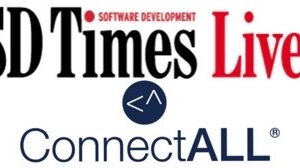
White Papers
How to Solve the Monolithic Jenkins Controller Problem
Whether you’ve been working successfully on your continuous integration (CI) infrastructure for some time or are just starting to build it out, you have realized the power of CI and are enabling your teams to be successful by implementing, administering, and sharing this powerful tool with the masses.
Fast forward to 3:00 AM on a Sunday morning… your phone is ringing…and your CI solution is down. Now what?!
The number one reason this type of scenario happens is due to monolithic controllers. This whitepaper is designed to help you understand and identify red flags to prevent you from creating these monolithic controllers.
Among what you’ll learn:
- What is a Monolithic Controller?
- 3 signs you are on the road to running a Monolith Controller
- Remedying a Monolithic Controller
- The future of CI and horizontal scaling
Download this whitepaper so you don’t get caught on the long, scary “monolithic” road!
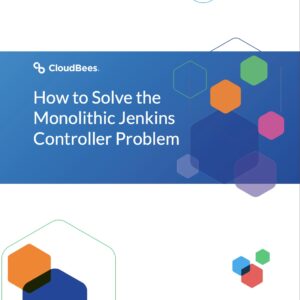
White Papers
Incorporating Mobile App Security into the Development Lifecycle Without Friction
Security is inherently more expensive if organizations find vulnerabilities after deployment, rather than incorporated into the lifecycle via security assurance (SA). If security isn’t incorporated early and often, major consequences could happen, such as:
- Financial loss
- Reputational damage
- Data loss (company or customer)
- IP theft
- And much more!
This whitepaper will show you how and where to seamlessly integrate security throughout the entire development lifecycle, without having to slow app development teams down.

Webinars
DevOps at Scale: Release Faster in More Complex Environments with Test Automation
How do you scale your testing to realize the full value of DevOps? In this session, Ethan Chung, Solutions Architect Manager at Keysight Technologies, will show how to expand testing coverage across complex applications with intelligent automation.
Watch now to learn the basics of automation right through to building sophisticated test cases that integrate with any DevOps pipeline.


